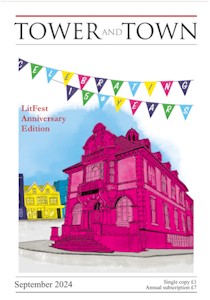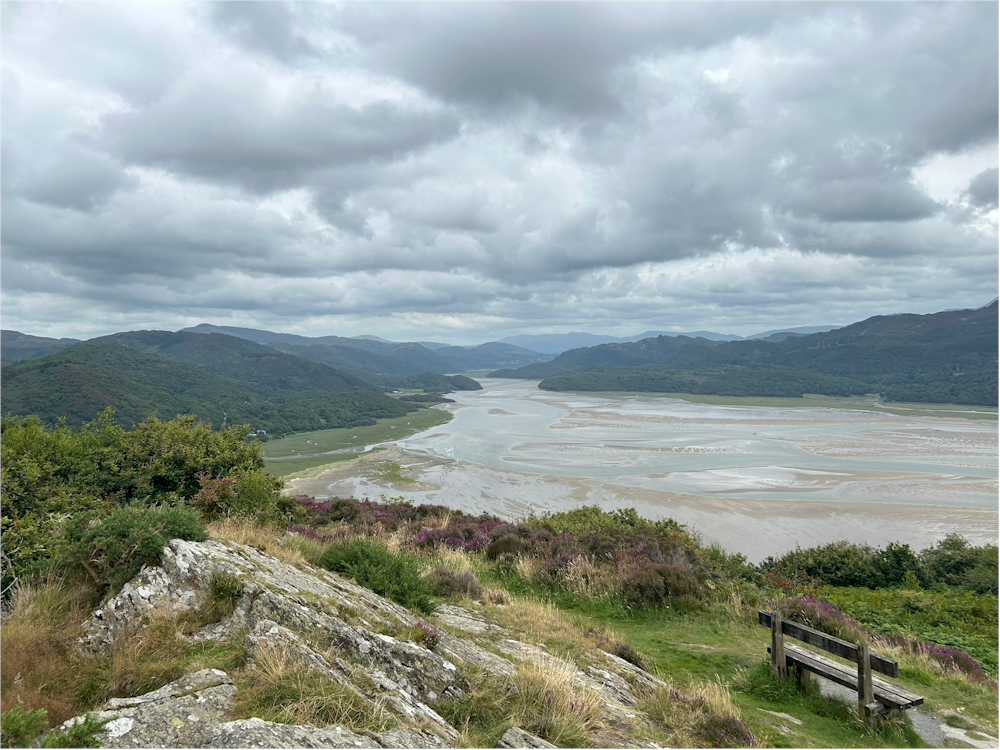

Tower and Town, September 2024 (view the full edition) (view the full edition)Clergy LetterHolidays hallow the whole year, hold a sacred place in our past. In almost every grief-stilled living room I have entered - notepad and teacup poised, like the mood, between spillage and restraint - it is to holidays the bereaved return: as if these were the weeks that mattered. The caravan in Morecambe, that place in the Lakes, the crammed car, Dad more relaxed. This homing in isn't disproportionate - we know full well the other fifty weeks of the year are where ordinary life occurred - it is simply our need for sabbath: for certain seasons to be festive and different, to renew the balance and make sense of the rest. As a child, fascinated by the succession of dates on the spines of my annuals, on my father's Parson's Pocketbook diaries, summer holidays formed a chain of memory, a way of telling the time. I took pride in being able to reel off the years and the locations, straining to focus the earliest, blurry recollections. The older, the better. Most powerful of all in personal myth-making are destinations we revisit, whose simplest features (which would soon be dulled if we were to remain there) become totems of wonderful recognition - the cafe is still there! - extending our infant delight in repeated play, in disappearance and return. Once laid down, these dormant impressions can be awoken in a moment. So it only takes a waft of wet bracken and I am back in North Wales, on another reluctant walk: Snowdonia, through a Thermos-fogged windscreen. This August, at short notice, we were invited to Bodowen, a house in Barmouth where we have stayed, every couple of summers, for fifteen years. Formerly the home of Himalayan adventurer Bill Tillman (lost at sea in his eightieth year, piloting a tug towards the Falklands - the glowing ashes of his image, dauntless behind moustache and pipe, still greet visitors aboard) Bodowen affords an unrivalled panorama of the Mawddach estuary, as it yawns into Cardigan bay. Mostly we've driven here late at night, often after Evensong on a Sunday, descending through a notch in the crags above Dolgellau, to peel sleeping children from their seats and arise to a landscape that places all else in the background. Slate hills, purpled with heather; the viaduct's delicate neckline; Cadair Idris, climbing through theophanic mist. Our friends are selling up, so this will be our last time in this God-haunted spot, particularly poignant for teenagers anticipating their own, opening horizon. There is, consequently, a heightened desire to rekindle former joys - from car soundtrack (Glory Bound by Wailin' Jennys, Ben Folds' Jesusland) to day trips (Harlech, for junk shops and fabric, Tan-y-Bwlch station on the Ffestiniogg Railway, for the enveloping sweetness of steam from a footbridge). Just before Harlech Castle's formidable silhouette crowns the headland, we pull off to find the church of Saint Tanwg, buried in the dunes like a snoozing granddad or abandoned dinghy. An unpromising prism to begin with, its plain medieval shell houses possibly the oldest Christian foundation in the country, presumed to date from St Patrick's Irish mission in the 430s AD. Inside, prone or prostrate by the altar, is the Ingenuus Stone, a striking fifth-century pillar, inscribed 'Ingenui' with its owner's name and carried, so it is thought, from the Wicklow Hills of Ireland. Until the 1960s, with common-sense utility, it was employed as a lintel over the church door. Tanwg is associated with this church only, and holy days stretching back over the sand.  Bishop Andrew |